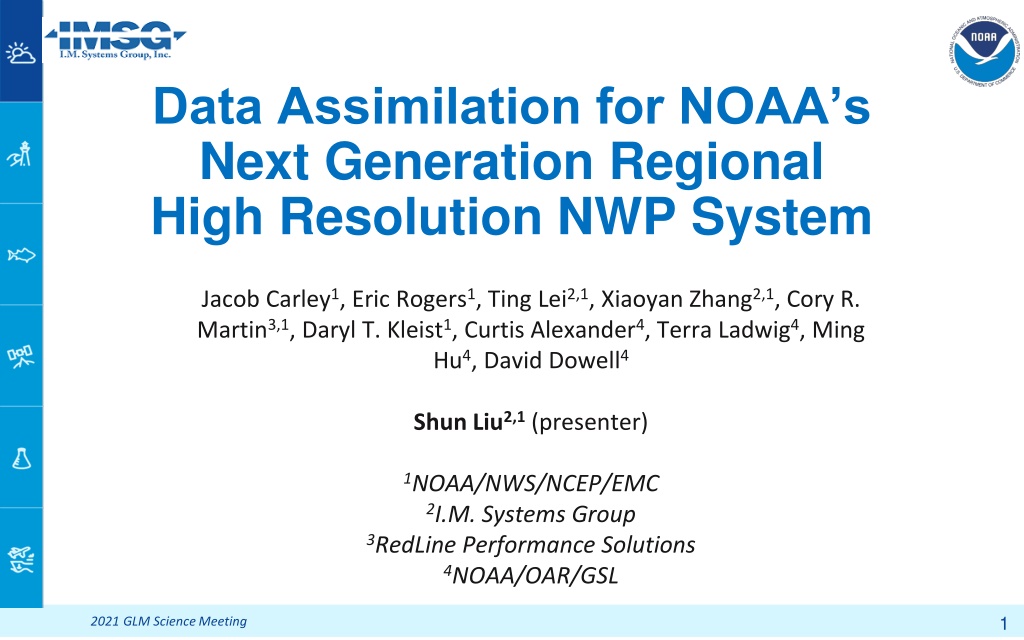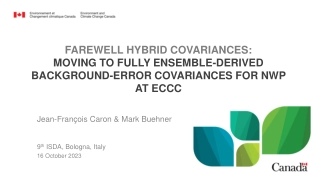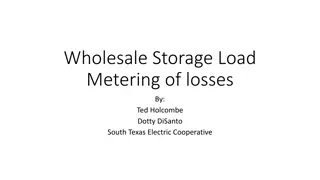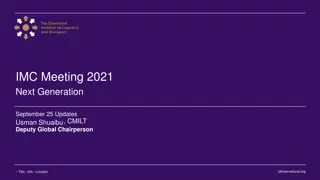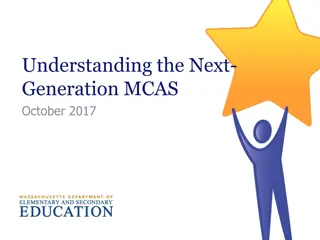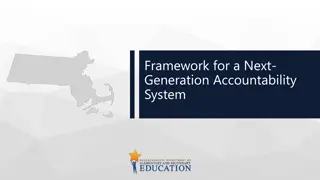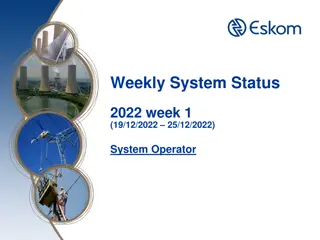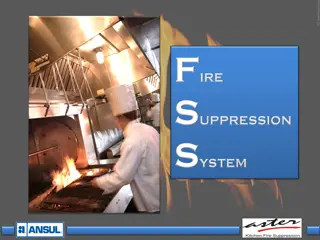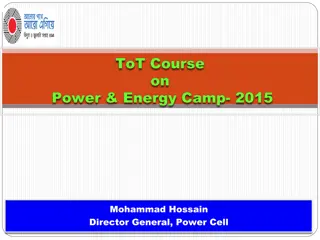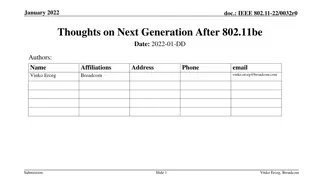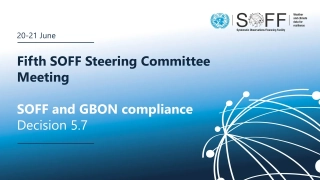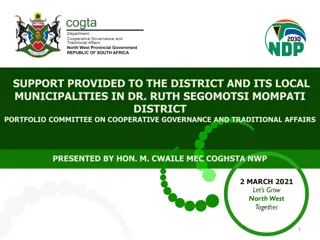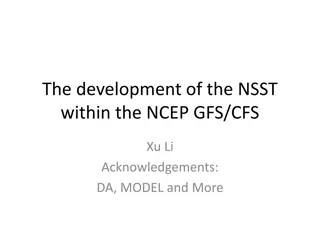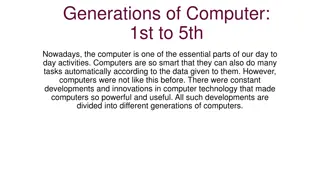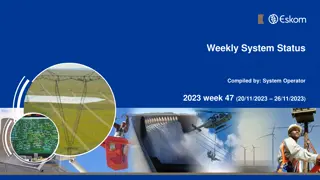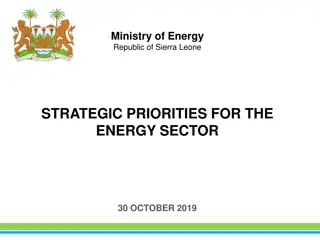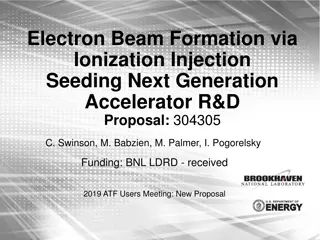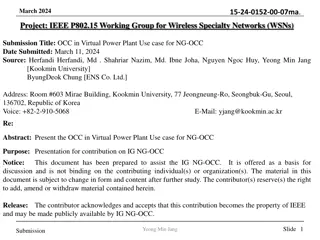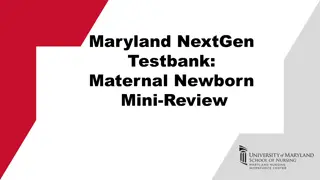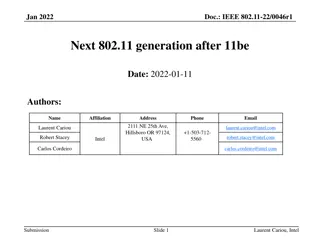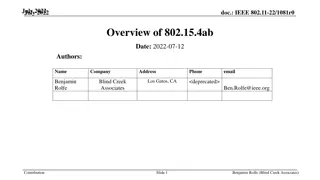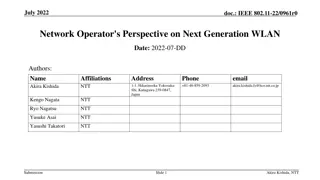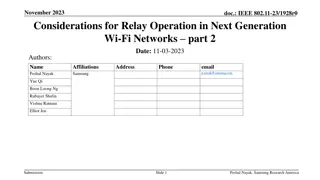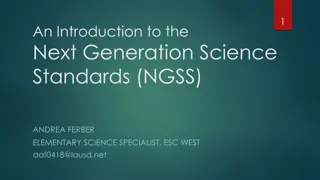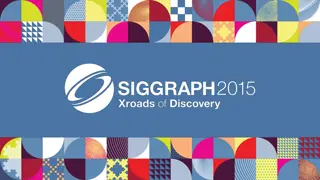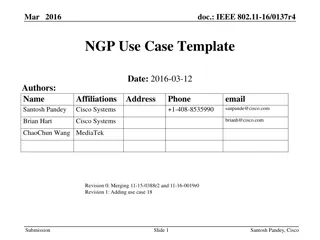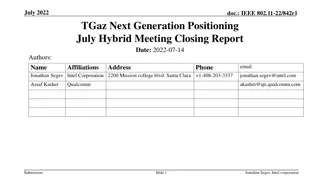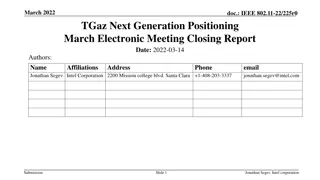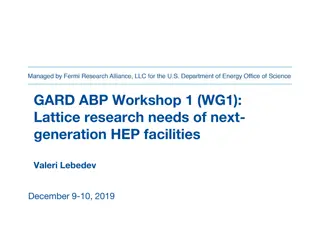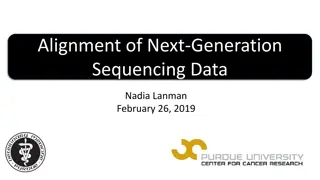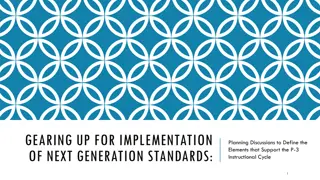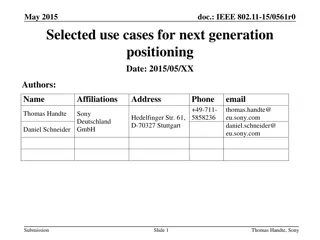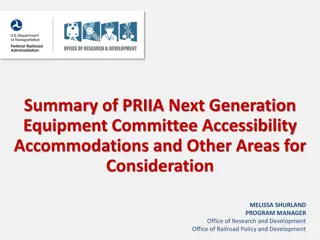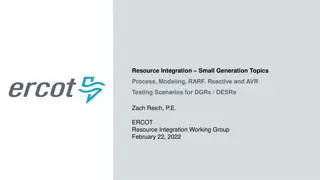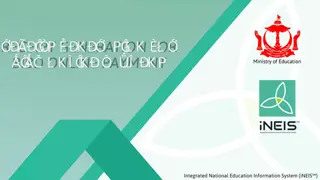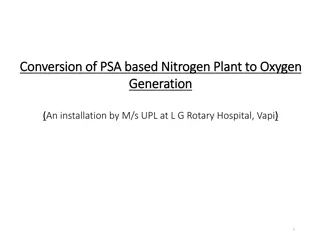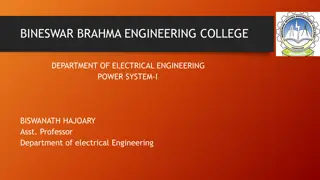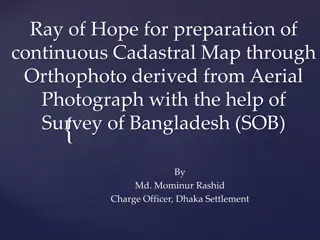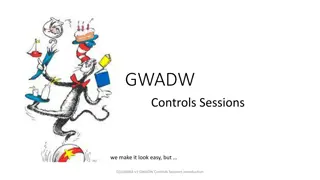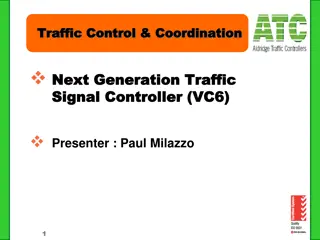Advancements in NOAA's Next-Generation NWP System
Explore the innovative Data Assimilation techniques and the Unified Forecast System for high-resolution regional modeling at NOAA. The suite aims to simplify operational Earth modeling, combining local and global domains, with an emphasis on observation processing, data assimilation, and verification. Discover the evolution towards a seamless suite of models meeting the environmental prediction needs efficiently. Uncover the details regarding the current snapshot of regional model suites and the unification of regional model production suites. Delve into the Rapid Refresh Forecast System's application based on the FV3-Limited Area Model, enabling rapidly updated convection-allowing forecasts. Furthermore, learn about unifying regional domains for enhanced modeling accuracy.
Download Presentation

Please find below an Image/Link to download the presentation.
The content on the website is provided AS IS for your information and personal use only. It may not be sold, licensed, or shared on other websites without obtaining consent from the author. Download presentation by click this link. If you encounter any issues during the download, it is possible that the publisher has removed the file from their server.
E N D
Presentation Transcript
Data Assimilation for NOAAs Next Generation Regional High Resolution NWP System Jacob Carley1, Eric Rogers1, Ting Lei2,1, Xiaoyan Zhang2,1, Cory R. Martin3,1, Daryl T. Kleist1, Curtis Alexander4, Terra Ladwig4, Ming Hu4, David Dowell4 Shun Liu2,1(presenter) 1NOAA/NWS/NCEP/EMC 2I.M. Systems Group 3RedLine Performance Solutions 4NOAA/OAR/GSL 1 2021 GLM Science Meeting
The Unified Forecast System A community-based, coupled, comprehensive Earth modeling system Source system for operational numerical prediction applications at NOAA Holistic, application-based approach aimed at simplifying the suite of models and forecast systems currently used into a single seamless suite that meets the operational needs of the organizations responsible for environmental prediction. Local global domains Sub-hourly seasonal prediction Shared components Earth-system model components (such as atmosphere, ocean, sea ice, land, and atmospheric composition predictive capabilities) Observation processing Pre-processing Data assimilation Post-processing Verification 2 2021 GLM Science Meeting
Near Current Snapshot of Regional Model Suite Global (15-30 km, 4/day) GEFS GFS Regional (12-15 km, 4-24/day) SREF NAM RAP HiResARW FV3-LAM HiResARW2 HRRR NAMnest CONUS/OCONUS CAM (3-4 km, 2-24/day) HREF Sub-CONUS CRM (1.5 km, on-demand) FireWxNest HiResWs NAM+Nests RAP/HRRR 3 2021 GLM Science Meeting
Unification of the Regional Model Production Suite Global (10-15 km, 24/day) GEFS GFS CONUS/OCONUS CAM (3 km, 24/day) Rapid Refresh Forecast System RRFS Sub-CONUS CRM (1 km, on-demand) Warn on Forecast System WoFS 4 2021 GLM Science Meeting
Rapid Refresh Forecast System (RRFS) A UFS Application Based on the FV3-Limited Area Model (LAM) Black et al. (JAMES, 2021) Rapidly updated Convection-allowing (~3 km) 65 vertical layers Hybrid 3DEnVar assimilation (36 members) Ensemble forecasts (9 members) Stochastic and multiphysics suite 18h+ hourly 60h every 6 hours 5 2021 GLM Science Meeting
Unifying Regional Domains HiResWs NAM+Nests RAP/HRRR ~9 million cells per layer 3 km RRFS domain 6 2021 GLM Science Meeting
Current testing Underway at NOAA EMC and GSL Some highlights for EMC runs Coldstarted North American domain DA over CONUS DA over North American domain At present all DA runs shown here have the following features: 3-km Forecasts at 00Z and 12Z Passively use global model (GDAS) EnKF members No 3 km DA members (yet) No cloud analysis or radar DA (yet) Use on-time obs only (no partial/catch-up cycle obs) Coldstart from 6h GDAS forecast 60 hr 3 km forecast Hourly hybrid 3DEnVar assimilation *Also M. Hu s presentation from earlier today [Operational DA I (O2-1A)] on Building a JEDI- and FV3-based Rapid Refresh Forecast System (RRFS) upon Decade of Development and Implementation of the High Resolution Rapid Refresh (HRRR) 7 2021 GLM Science Meeting
Larger domain impact on observation usage CONUS domain observations are primarily from conventional sources (~67%) North American domain has ~250% increase in assimilated observations And satellite data make up over 75% of the observations* *See poster by X. Zhang on Satellite radiance data assimilation within NOAA's prototype Rapid Refresh Forecast System (WCRP-WWRP Symposium on Data Assimilation and Reanalysis) 8 2021 GLM Science Meeting
Real Time Assessments in NOAAs Flagship Testbeds Example from the Hazardous Weather Testbed Spring Forecast Experiment Evaluations are underway of prototype systems in NOAA testbeds for early feedback Month+ long intensive experiments Research and operational expertise assess forecasts daily Tests are coordinated with academic, operational, NOAA lab, and other partners Feedback leveraged to improve systems no DA Obs 33 hr forecast valid May 4th, 2021 at 09 UTC. Storm reports are overlaid. with DA 9 2021 GLM Science Meeting Imagery from https://hwt.nssl.noaa.gov/sfe_viewer/2021/model_comparisons
RRFS and TCs Domain becoming sufficiently large to capture landfalling TCs An emerging application area Will require building upon the many years of experience from the hurricane DA teams HWRF and now HAFS RRFS *Thanks to Zhan Zhang (EMC) for this figure 10 2021 GLM Science Meeting
Near and Long Term: Cycling Strategy Partial Cycling RRFSv1 Partial cycling Been used at NCEP/EMC since December 2008 RRFSv2+ Full cycling + blending GEFS longwave perturbations into ICs* High latency obs? See talk from L. Slivinski later Progress towards a global hourly-updating data assimilation system 06 UTC 05 UTC 04 UTC 03 UTC 07 UTC 00 UTC 02 UTC 01 UTC Continuous DA cycle with blending Blend ICs w/ GEFS Longwaves Hourly free forecasts *Schwartz, C. S., J. Poterjoy, J. R. Carley, D. C. Dowell, G. S. Romine, and K. Ide, 2021: Comparing partial and continuously cycling ensemble Kalman filter data assimilation systems for convection-allowing ensemble forecast initialization. WaF, In press. 11 2021 GLM Science Meeting
JEDI Transition Work [ongoing for RRFSv1+] 2mT 2mSPFH 10mU 10mV New JEDI UFO Successfully Matched H(x) Successfully Matched H(x) Successfully Matched H(x) Successfully Matched H(x) Legacy GSI Observer Legacy GSI Observer Legacy GSI Observer Legacy GSI Observer *Also see Comparison of JEDI Unified Forward Operator and GSI Observer Using Rapid Refresh Forecast System Background by S. Liu (WCRP-WWRP Symposium on Data Assimilation and Reanalysis) Tests of hybrid EnKF-Variational Data Assimilation capabilities using JEDI with NOAA's Next Generation Regional High Resolution NWP System by T. Lei ((WCRP-WWRP Symposium on Data Assimilation and Reanalysis)) 12 2021 GLM Science Meeting
Lightning data at NCEP 13 2021 GLM Science Meeting
Proxy Composite reflectivity from Lighting observations Lightning observation adds value in the area without radar observation North America domain with 3-km resolution provide more opportunities to use GLM for initialize/trigger convection and improve forecast. 14 2021 GLM Science Meeting
Challenges System Number of instances or nodes Wall time for 60hr forecast (hrs) This is a big system! Cloud HPC project underway Not just CPU hours Stressors on I/O bandwidth Storage Dissemination AWS 80 (c5n.18xlarge) 3.96 NOAA HPC System (Hera) 80 4.68 A brand new, end to end system meant to facilitate retirement and simplification of many longstanding systems Benchmark operational systems have decades of development A high bar is a good thing Clearing it takes healthy collaboration through the UFS community 15 2021 GLM Science Meeting
RRFSv1 (current) Timeline Remainder of 2021 Incorporate partial cycling strategy Establish RRFS ensemble DA component 2022 Prototype end-to-end RRFS w/ DA running On prem and cloud Beta system assessment Testbed participation Late 2023 - Implementation Thank you! 16 2021 GLM Science Meeting
